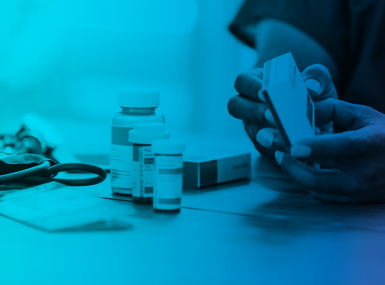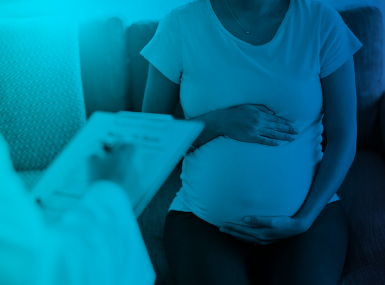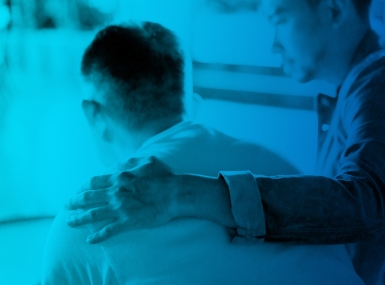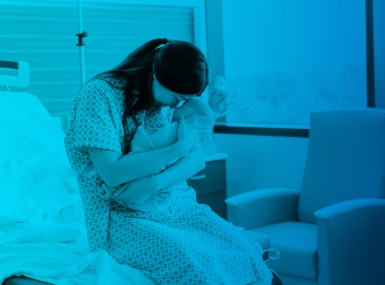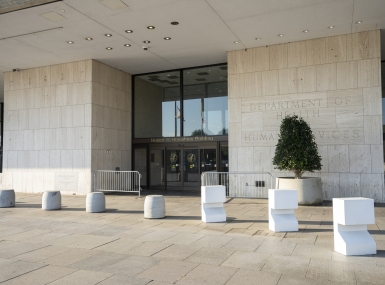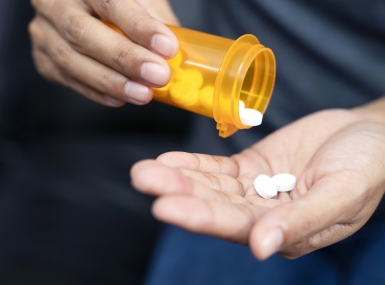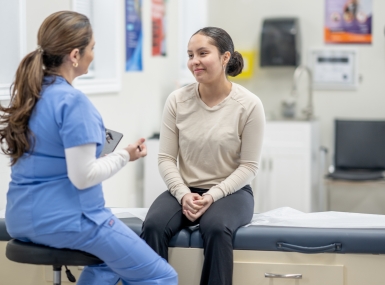Post-Overdose Response Teams

Upcoming Events
Related News
What are post-overdose response teams?
Post-overdose response teams (also called quick response teams or post-overdose outreach programs) conduct outreach and offer services to people who have experienced an overdose within about 72 hours of the overdose event.1 Teams consist of two or three health-related professionals, such as harm reduction professionals, outreach specialists, peer recovery specialists, healthcare professionals or emergency medical services (EMS) personnel. Teams can be coordinated by county agencies (e.g., health departments) or by community-based organizations (e.g., harm reduction organizations) operating in partnership with county agencies.
The goal of post-overdose response teams is to prevent future overdose events by connecting the person who overdosed and their immediate friends and family with:
- Evidence-based overdose prevention tools, such as naloxone, fentanyl test strips and harm reduction services;
- Information about and warm handoffs to social services, such as housing, food and nutritional assistance and employment support; and
- Evidence-based treatment and recovery services.
If EMS and other advanced practice providers join the team, they can administer buprenorphine, a medication for opioid use disorder (MOUD), during the outreach visit as appropriate.2
“Our agenda is to provide care and support to those who need it, that’s it.”
–Claire Hubbard, Buncombe County, N.C. Post-Overdose Response Team
Watch
See how peer recovery coaches effectively initiate recovery services in emergency departments.
What evidence supports post-overdose response teams as an effective opioid response strategy?
Post-overdose response teams are proven to link people with social services and evidence-based treatment better than point-of-service referrals (e.g., providing a person in need with the number of a hotline to call on their own) or warm hand-offs alone if the outreach participants meet the following criteria:
- Was previously screened for substance use disorder (SUD) or initiated onto treatment with buprenorphine in an emergency room;
- Expressed interest in substance use treatment; and
- Consented to a follow-up visit by a post-overdose response team.3-6
As of February 2023, only post-overdose response programs that connect overdose survivors to social services have been associated with community-level reductions in overdose.7
The cities of Houston, Texas and Greenville, S.C. have implemented similar post-overdose response programs. Teams in both cities conduct outreach to patients who were previously screened for SUD or received substance use counseling at the emergency department after presenting with a substance use-related concern.4,5 This type of follow up increases the likelihood that patients will engage in treatment after receiving a referral in the emergency department.4,5
If post-overdose response teams aim to connect people with treatment, screening possible outreach candidates for indicators of SUD is an important step. As many as half of all people treated for accidental overdose do not have a SUD4 and will not be helped by substance use treatment. However, post-overdose response teams can decrease the risk of subsequent overdose for all outreach participants by providing naloxone and other harm reduction services.8
Are there risks to my community if we don’t implement post-overdose response teams?
Potentially.
Most post-overdose response programs have not been rigorously evaluated, so it is not entirely clear what benefits may be gained or lost through post-overdose response teams. Some programs have demonstrated effectiveness at connecting people to — and keeping them engaged in — treatment, but only if candidates for post-overdose response are first engaged in an emergency department or carefully screened for SUD and treatment readiness.3-5
Evidence is clear, however, that improperly implemented post-overdose response teams can cause harm by:
- Subjecting people who have experienced an overdose and their family members to additional trauma by sending non-health-related personnel or inadequately trained team members to their homes;9
- Placing people with SUD at increased risk of arrest and incarceration,10,11 which increases overdose risk;12
- Using coercive strategies to mandate entry into treatment;9,10 or
- Directing people to treatment options that are not evidence-based and/or are known to increase overdose risks.11
What are best practices for post-overdose response teams?
Building the team
- Build an outreach team with professionals who have appropriate training and experience. This may include harm reduction professionals, outreach professionals, certified peer recovery specialists, community healthcare workers and EMS.1
- Ensure that all post-overdose outreach staff and support network members have adequate training in harm reduction, trauma-informed care, data management, patient confidentiality and evidence-based strategies for overdose prevention.1
- Include people with lived and living experience of substance use and of SUD in the planning, implementation and evaluation of the program.1,8,13
Introducing the team
- Connect outreach activities with other post-overdose interventions, such as emergency department-based peer recovery coaching or buprenorphine initiation.4,5,14
- Introduce response team staff while the person is still with EMS or in the emergency department being treated for overdose.5
Sending the team
- Use a clinical screening tool to identify people who have a SUD and are ready for treatment4 and focus outreach services on these individuals.
- Call ahead. Gaining consent to conduct outreach is associated with better treatment engagement.6 Unannounced home visits can cause unnecessary stress and worry.1,9
Equipping the team
- Provide linkage to evidence-based treatment (especially MOUD) when treatment is indicated and desired by the person who experienced an overdose.15
- Begin medication during the outreach visit.2,4 Include EMS or other personnel on the team who can administer buprenorphine on site.
- Offer harm reduction services and supplies, like overdose education, naloxone, safer use equipment and fentanyl test strips.8,16,17
- Facilitate connections with social services such as shelters, food banks and nutritional assistance. Emerging evidence suggests that these are the most impactful things post-overdose response teams can do.18,19
Watch
Peer recovery coaches are uniquely skilled to meet the needs of people living with SUD.
What are some examples of successfully implemented post-overdose response teams?
Buncombe County, N.C. established a post-overdose response team in early 2021. The team follows a community paramedicine model, with teams composed of a community paramedic and a peer support specialist. A core tenant of the program is that team members let people choose the level of help they get. Since 2022, the team has been authorized to administer buprenorphine immediately following an overdose. If the person is not ready to start receiving MOUD, they can also call the team the next day if they change their mind. The team can continue administering buprenorphine for up to five days, after which they connect the person to local outpatient treatment and resources to address social determinants of health.20,21
The Houston Emergency Opioid Engagement System (HEROES), based at the University of Texas Health Science Center, conducts outreach to persons who have experienced an overdose. Eligible participants are identified through the emergency department (where they are screened for SUD and invited to voice their readiness for treatment) or through the local EMS system after naloxone administration for a suspected opioid overdose. Outreach teams consist of a licensed peer recovery coach and a paramedic, who can provide buprenorphine during the visit.4
The Knox County Health Department in Tennessee is currently planning its own post-overdose response program designed to provide harm reduction education and increase outreach services to minority populations. In addition to providing healthcare and harm reduction navigation services, Knox County also aims to link survivors with housing in order to support people who use drugs in the early stages of recovery.22
These and many other model programs are described online at the Brandeis Opioid Resource Connector
Additional Resources
Where can I learn more about post-overdose response teams?
- North Carolina Department of Health and Human Services’ “Post Overdose Response Team Toolkit”
- U.S. Department of Justice, Bureau of Justice Assistance's “Innovative Emergency Medical Services (EMS) Response to Overdoses: Beyond Naloxone”
- U.S. Substance Abuse and Mental Health Services Administration's “Peers Supporting Recovery from Substance Use Disorders”
- PRONTO Study: Partnerships for Post-Overdose Outreach’s “Best Practice Guidance for Post-Overdose Outreach”
Featured Initiative
Opioid Solutions Center
NACo's Opioid Solutions Center empowers local leaders to invest resources in effective treatment, recovery, prevention and harm reduction practices that save lives and address the underlying causes of substance use disorder.

About the Brief
Author
Jennifer J. Carroll, PhD, MPH
References
- North Carolina Department of Health and Human Services, Injury and Violence Prevention Branch. Post-Overdose Response Team (PORT) Toolkit. Published online 2020. Accessed September 9, 2022. Available here.
- Davis CS, Carr DH, Glenn MJ, Samuels EA. Legal Authority for Emergency Medical Services to Increase Access to Buprenorphine Treatment for Opioid Use Disorder. Ann Emerg Med. 2021;78(1):102-108. Available here.
- Dahlem CH, Scalera M, Anderson G, et al. Recovery opioid overdose team (ROOT) pilot program evaluation: A community-wide post-overdose response strategy. Substance Abuse. Published online 2020. Available here.
- Langabeer J, Champagne-Langabeer T, Luber SD, et al. Outreach to people who survive opioid overdose: Linkage and retention in treatment. Journal of Substance Abuse Treatment. 2020;111:11-15. Available here.
- Byrne KA, Roth PJ, Merchant K, et al. Inpatient link to peer recovery coaching: Results from a pilot randomized control trial. Drug and Alcohol Dependence. 2020;215:108234. Available here.
- Scott CK, Dennis ML, Grella CE, et al. Findings from the recovery initiation and management after overdose (RIMO) pilot study experiment. Journal of Substance Abuse Treatment. Available here.
- Xuan Z, Yan S, Formica SW, et al. Association of Implementation of Postoverdose Outreach Programs With Subsequent Opioid Overdose Deaths Among Massachusetts Municipalities. JAMA Psychiatry. 2023;80(3). Available here.
- Carroll JJ, Green TC, Noonan RK. Evidence-Based Strategies for Prevention Opioid Overdose: What’s Working in the United States. Published online 2018. Accessed October 10, 2018. Available here.
- Rhoads Z. The Problems With Post-Overdose Response Teams. Filter. Published February 24, 2020. Accessed September 11, 2022. Available here.
- Tori ME, Cummins E, Beletsky L, et al. Warrant checking practices by post-overdose outreach programs in Massachusetts: A mixed-methods study. Int J Drug Policy. 2022;100:103483. Available here.
- Formica SW, Waye KM, Benintendi AO, et al. Characteristics of post-overdose public health-public safety outreach in Massachusetts. Drug and Alcohol Dependence. 2021;219:108499. Available here.
- Mital S, Wolff J, Carroll JJ. The relationship between incarceration history and overdose in North America: A scoping review of the evidence. Drug Alcohol Depend. 2020;213:108088. Available here.
- Boilevin L, Chapman J, Deane L, et al. Research 101 : A Manifesto for Ethical Research in the Downtown Eastside. Published online March 15, 2019. Available here.
- Clark SA, Davis C, Wightman RS, et al. Using telehealth to improve buprenorphine access during and after COVID-19: A rapid response initiative in Rhode Island. J Subst Abuse Treat. 2021;124:108283. Available here.
- Carroll JJ, Asher A, Krishnasamy V, Dowell D. Linking People with Opioid Use Disorder to Medication Treatment. Published online 2022. Accessed June 8, 2022. Available here.
- Peiper NC, Clarke SD, Vincent LB, Ciccarone D, Kral AH, Zibbell JE. Fentanyl test strips as an opioid overdose prevention strategy: Findings from a syringe services program in the Southeastern United States. International Journal of Drug Policy. 2019;63:122-128. Available here.
- U.S. Substance Abuse and Mental Health Services Administration. SAMHSA Opioid Overdose Prevention Toolkit. U.S. Substance Abuse and Mental Health Services Administration; 2018. Accessed June 15, 2022. Available here.
- Formica SW, Carroll JJ, Xuan Z, Green TC. Post Overdose Outreach Programs in Massachusetts. Presented at: Rx Drug Abuse & Heroin Summit; April 20, 2022; Atlanta, GA. Accessed September 12, 2022.
- Waye KM, Goyer J, Dettor D, et al. Implementing Peer Recovery Services for Overdose Prevention in Rhode Island: An Examination of Two Outreach-Based Approaches. Addict Behav. 2019;89:85-91. Available here.
- Patel A. Buncombe’s Post-Overdose Response Team begins administering medication in the field. WLOS. Published March 24, 2022. Accessed February 26, 2023. Available here.
- Buncombe County North Carolina. Community Paramedicine: A New 911. Buncombe County Center. Published 2022. Accessed February 27, 2023. . Available here.
- National Association of County and City Health Officials. NACCHO Awards New Implementing Overdose Response Strategies at the Local Level (IOPSLL) Funding - NACCHO. NACCHO Voices. Published 2022. Accessed March 2, 2023. Available here.


